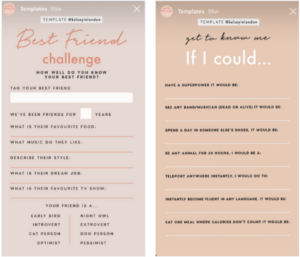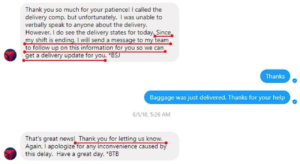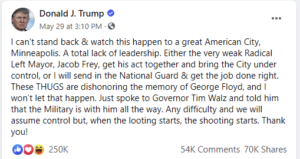Why Live Video Should Be a Part of Your Digital Marketing Strategy
Finding new tactics to add into your marketing mix can be tough. It can be even harder to stand out when it seems like all companies are using the same tools and strategies.
One of the best ways to differentiate yourself from the competition is by using newer platforms that not everyone has transitioned to yet. While live video is now used by many big brands, it hasn’t made its way to everyone yet, especially small businesses.
Videos in general generate the most traffic and engagement of all types of content. Live video content quickly gained traction and data showed that people were spending 3x longer watching live video compared to pre-recorded content.
If you haven’t already added live video into your marketing mix, it’s the perfect way to start stepping up your social game.
Why You Should Start Going Live
1. Increased Engagement
A Vimeo study found that 80% of consumers would rather watch a livestream about a product than read content marketing posts. Not only do more people prefer live video, but it also adds two elements that pre-recorded videos don’t have: FOMO and real time audience interaction. People hate feeling like they’re missing out on something. It’s even better when they can get their comments and questions read in real time and hear the person respond. It makes users feel more included, increasing engagement significantly.
2. More Qualified Leads
Not only do more people engage on live video, they also convert more. The same Vimeo study found that 67% of the livestream audience made a purchase following the session. That is a huge conversion rate in comparison to other content traffic.
3. Better Authenticity
With a live video there’s no cuts or retakes. It shows people’s and brand’s most authentic selves, which resonates best with consumers today. This builds more trust and long-term relationships among you and your audience.
Where to Go Live
1. Instagram
Instagram holds to be one of the best places to go live. There are over 100 million daily users, it’s simple to navigate and it notifies your followers when you go live. Lives can last up to an hour and you can save them on your story for people to view later.
2. Facebook
Facebook is also one of the most popular platforms to go live on. Facebook Live is good for face-to-camera videos, as well as live-action shots from events. Broadcasts can last up
to four hours and in addition to the usual video analytics, you’ll also be able to see the number of live viewers, people reached, reactions, comments and shares. It also notifies your audience when the stream begins and at the end of the broadcast, the video is added to your profile or Facebook page.
3. TikTok
This is one of the newest platforms, but the fastest growing, with over 800 million active users. If you have a younger audience, this is the perfect place to go live. Live video streaming allows TikTokers to connect with their followers in real-time using comments. It can also help you monetize your account if your live stream audience sends you virtual “gifts.” The best part about live videos is that you can cover a lot of content through them since TikTok hasn’t yet restricted their duration.
What to Share on Live
1. Behind the Scenes
No matter the product, service, industry, etc. consumers love seeing how things are created. Live videos give consumers the opportunity to get sneak peeks of how their favorite things come to life, which can help solidifying sales and loyalty.
2. Q&A’s
Question-and-answer formats are great for driving high levels of traffic and engagement. If you invite high-profile guests onto your live streaming shows, you can receive lots of interaction from fans. People love getting special insights and tips from influencer and industry leaders.
3. Events
Like we said before, people love to feel included. Live streaming events can let people that couldn’t attend in person, feel like they’re still a part of it. This can also create a lot of excitement around the event as well.
4. Announcements and Promotions
Live video really helps people feel like there is a VIP experience as they got to see something live on video before it hits the “shelves.” Consider teasing whatever new thing is happening in your business as a live stream using exclusive words to describe the sessions ahead of time to drive traffic. Create excitement around call-to-action like asking for feedback or sending a limited amount of product for people to test out. By doing so you create an eager group of people ready to buy new stuff you teased out to them.
More from Onimod Global
Onimod Global releases the latest digital marketing news and essential marketing tips every Tuesday and Thursday! To catch up on the top digital marketing news and trends, click here. To find out more about who we are and what we do, click here.





